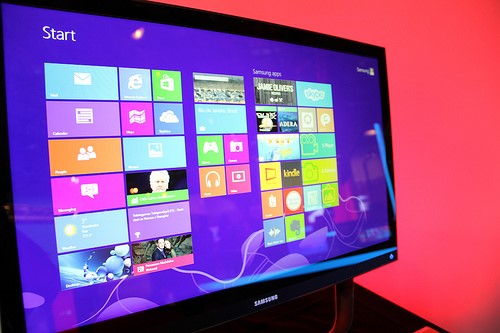Author Archive
What to Do After Buying a New Laptop
Buying a new laptop can be a difficult venture. You must decide which one is right for you. Depending on what your needs are, there are tons of things to consider like hard drive space, graphics cards, and general ease of use.
But once you find your dream computer, there are a few things that you must do. Here are some tips to follow after you purchase your laptop to make your computing experience a pleasurable one.
Register and Update Windows
Image via Flickr by Microsoft Sweden
An important part of purchasing your computer is actually registering (and successfully activating) Windows. It activates all the perks of having Windows as an operating system, such as Windows Media Player, and it also enables desktop personalization.
Next you’ll want to download all system updates and service packs. You’ll want a really fast internet connection for this, because these can be huge files and take a while to download. However, they’re vital to making your computer safer and run much smoother. These updates patch up any bugs or glitches that were newly found, and they streamline the performance of the operating system as well as add new features. To answer super user “Hennes” question, it doesn’t matter which variation of Windows 7 you have, Pro or Home, it will run, performance wise, the same, if you’re worried about performance issues think about either adding more RAM or upgrading to Windows 8, which for the for the most part is a more streamlined and smoother operating system.
Rid your Computer from Unwanted “Bloatware”
When you purchase a computer, you’d imagine that you’re starting with a clean slate. However, this couldn’t be further from the truth. Most computers are loaded with unwanted games and software (referred to as bloatware, since it bulks up what should be a clean slate). The most efficient way to truly free up your computer is to install a brand-new, store-bought copy of Windows onto your hard drive. This will wipe out everything that was on the hard drive (so make sure you save everything you wanted to keep on an external drive or disc) and leave a clean and smoothly operating system, free of unwanted, useless bloatware.
If you don’t feel like doing this, or don’t want to buy a new copy of Windows, you can try manually uninstalling the offending software, by going to Start > Control Panel > Programs and Features. From here you can go to each program you don’t want and click uninstall. For programs that are more deeply rooted, like anti-virus software, you can go to the developers website and search for the “complete uninstall” procedure and follow their steps to completely eradicate it from your system.
Anti-virus and Security Software
While many computers come with standard anti-virus software, it’s important to make sure you have the right program to deal with potential intruders. That being said, you may want to consider forking out a few dollars for an all-encompassing anti-virus program, such as Norton Antivirus software, or save some money and get basic protection, with something like AVG Anti-Virus software.
Going together with anti-virus software is security scanning software. What you’re looking for are programs such as malware that will make your computer run at a turtle’s pace. By running a security scan, you can remove all the unwanted unintentionally downloaded programs off your hard drive before you get into computing that would release sensitive information.
Schedule a security scan for about once a week (you can set it to automatically begin when you want, in whatever increment you choose) to keep your computer free from malicious programs. Keep this software running in the background, and it will detect and quarantine any questionable and infected files that you may have just unintentionally downloaded and it will also warn you and deter you away from possibly unsafe sites.
Back Up Software and Recovery
Any computer with Windows will have system recovery loaded to it. Recovery restores your computer to a pre-existing state if the worst should happen.
If you drop your computer or it suddenly fails due to a power surge or something else, recovery will make your computer work again if possible. Backing up, on the other hand, is basically insurance for your computer. You can take all the files that you never want to lose, and you can put them on an external hard drive. Or if you don’t want to buy one of those, you can copy the files on to a DVD or CD and keep them in a safe place. These measures ensure that you will never have to fret over lost work.
Physical back-ups aren’t your only option – there are plenty of ways to back up your info using an online cloud service, doing this will automatically back up your files as you make them, and no matter what happens to your computer, or backup drives, your files will be downloadable from their hard drives on their servers.
Power Saving
Make sure that, after registering Windows, you go into your personalization and check your power saving scheme. Here, you can configure your Windows 8 power plan settings and options. Choose how long until your computer turns off after it’s idle, as well as setting a screen saver. Both of these things will save you on your energy bill and keep your computer running longer.
No matter what laptop you choose to buy, following a few simple steps for your new laptop will go a long way. Although you shouldn’t expect problems on a brand new machine, it’s all about peace of mind. You can use the computer at your leisure and not be worried about the problems that can compound over time.

